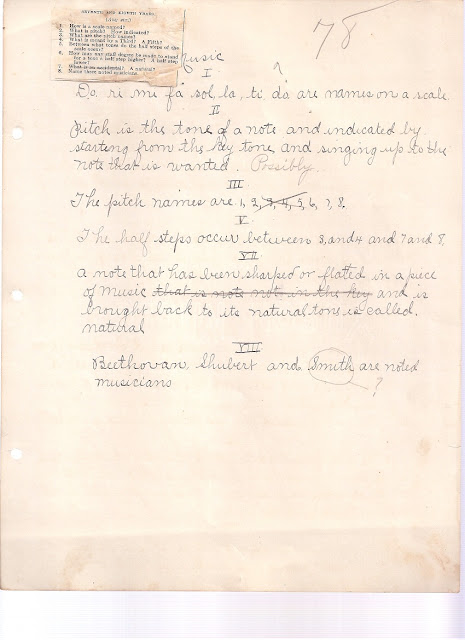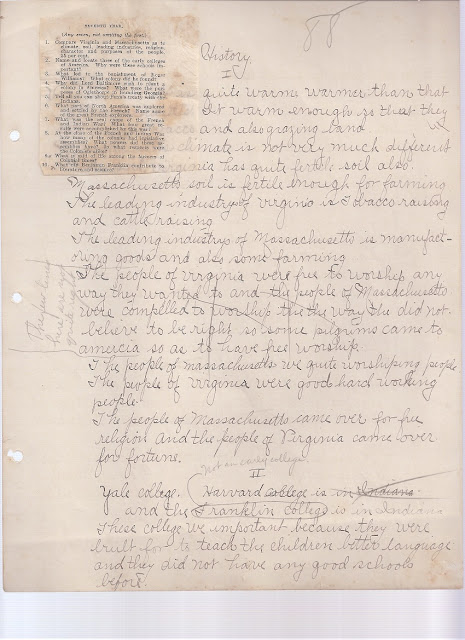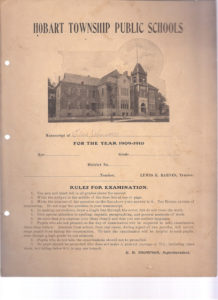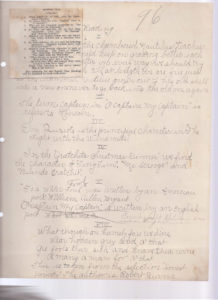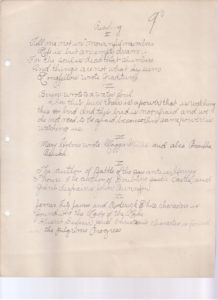Originally published on genealogyatheart.blogspot.com on 4 May 2016.
Greetings on Star Wars Day! How appropriate that the start of this year’s NGS Conference is on May 4th (Force) be with you. If you’re following me on Twitter you may have seen my tweet this AM. One of the sound technicians at the conference who was working hard to make the sessions available live told me he is really interested in genealogy and was so excited to learn about family history while he did his primary job. When he showed me his travel mug – of Darth Vader with the words “I Am Your Father”- I had to take his picture and send it out into the universe. It was a perfect way to start the day!
I mentioned in my last blog I didn’t think I was going to be able to write until the weekend after I return home from the conference but I need to share a few events that have me really excited.
The first was the Board for Certified Genealogists “On the Clock” Dutch Treat Dinner that was held at Bravo Italiano Ristaurante on 17th Street in Ft. Lauderdale Tuesday evening. There were 42 attendees consisting of Certified Genealogists, wanna be’s and family/friends. Russ and James, the restaurant co-owners, and their staff did a phenomenal job making sure that our party was accommodated. The food and atmosphere was superb! I cannot convey how nice it is to be with a group of people who get excited about that serendipitous photo find of Great Aunt Betsy or can relate to the time you slogged through a violent rainstorm only to discover that the rural cemetery is now on private property you can’t access. It was heartwarming!
I don’t know about you but I’ve not had much luck with connecting hubby’s or my dna that I had done through Ancestry.com. I haven’t had it redone with the new dna kit but with the old one, my closest connection was Marie Antoinette. I’m not making this up. For the record, she didn’t really say “Let them eat cake” but that’s for a different blog. Apparently others have had great match up success. Today, I met 3rd cousins who found each other through Ancestry.com’s match. They had never met in person before today and asked if I would snap a few pictures of them together at the conference. They had a remarkable resemblance! I was honored that they asked me to take their picture of that special meeting. It was like living Long Lost Family in person!
When the Exhibition Hall opened after the keynote address, I never would have guessed what amazing event was in store for me. I was meandering along when I came upon the booth of ArkivDigital, a Swedish Genealogical & Historical Research site online. I had used the site once before, when I was in Salt Lake City at the Family History Library last spring. It helped me obtain the Swedish names of my husband’s maternal great grandfather, his first wife and their children. I had tried to find information about the second wife, of whom my husband is descended from but I had no luck. One of the ladies at the table asked me if I had any Swedish research needs and I responded that I had a major brick wall and that I absolutely hate doing Swedish research because I just don’t understand it. She laughed and said I should speak with her co-worker who was engaged in a conversation with someone else because Swedish research is not difficult. Yeah, right, I’m thinking. Soon I was introduced to Kathy Meade who recommended I write down any dates I had for the ancestor and she would look them up in her database. Since I was volunteering as a room monitor for the next session I had to run; I told Kathy I’d be back later in the day. The other lady said she was sure that Kathy would resolve my brick wall.
After the next session ended I went online and wrote down what I knew – birth date from the death certificate, marriage date from the marriage license, death date from the death certificate, 1900-1930 census info, a few years of City Directory listings and the cemetery record. The death certificate did not list a maiden name, of course. The marriage record had the name of Johnson but I always figured it was wrong because she married a Johnson. Perhaps instead, they were cousins.
I had the place of birth as Sard, Sweden but I’d never been able to find that place name. A colleague told me she thought the place must have existed once in a rural area and was no more. Kathy said she never heard of Sard and thought it might be a mistranslation or misunderstanding by a family member. She recommended focusing just on known dates. Into her database she entered the birthdate and Voila! there shows up the birth record, baptism date, census and parish exit emigration record. I was stunned. The first name wasn’t Louisa, it was Louvisa. The last name wasn’t Johnson, it was Jonnason. The emigration date matched the US census records AND she was from the same area that her future husband was from. More research is needed but it is possible she went to the US because his first wife had died and there was small children left motherless.
Louvisa had worked as a maid in Sweden and her mother had died a few years before she emigrated. She left behind two sisters and her father. Once the shock of the find wore off I started crying. Then I called my husband who told me to stop crying. I then got up and did a happy dance. I understand that in most public locations people observing my behavior would most likely make a judgement that I was mentally ill but at the convention I was soon joined by other attendees who had overheard what was happening. They joined in the fun. I tried to buy Kathy lunch but she said no. Once I get home I’m purchasing the program AND taking her 4 Swedish research classes on Legacy. I am sincere when I say this was worth the entire price of the conference. If you are stumped with your Swedish line I highly recommend checking out ArkivDigital and Kathy’s Legacy classes. Clearly, the Force was with me today at the conference!





